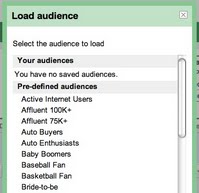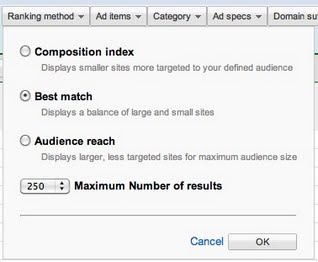Doubleclick Ad Planner is a free media planning tool that identifies websites your target audience is likely to visit so you can make better-informed advertising decisions. So why is Google giving this information away to anyone with a Google account? It's in Google's best interest to make sure that the world of online media is easilly available to all its advertisers, not just those who can afford to pay expensive annual licenses for 3rd party web statistics providers. This "democratization of data" gives users, bloggers, startups and small businesses quick access to information that used to only be accessible to big agencies and global brands.
When I show Ad Planner to advertisers and agencies, the first question I get is: "free is great, but I where does this information come from?" Ad Planner combines information from a variety of sources, such as aggregated Google search data, aggregated opt-in anonymous Google Analytics data, opt-in consumer panel data, and other third-party market research. The data is aggregated over millions of users, powered by computer algorithms, and doesn't contain personally identifiable information. Ad Planner provides data for a much larger set of sites than many leading media research & planning tools, giving greater visibility on publisher sites for precision online media planning. Advertisers can define specific audiences by demographic and interest criteria and find relevant sites – small and large – that would otherwise be hard to find information on.

The first step to using Ad Planner is defining your target audience. If you are unsure of the specific characteristics of your target audience, try browsing through the pre-defined audiences and select one that seems close to what you are looking for. From here you can customize the list of sites, keywords and demographics to fit the specifications of your product, service or promotion. If you still need guidance about the characteristics and tendencies of your target audience, enter the URL of a site you know is visited by your target audience into the field under the "search by site" tab. Keep in mind that demographic information is only available for certain countries. Google gets this demographic information from a 3rd party provider on a country by country basis. For many developing markets, this data does not exist. The pre-defined audiences are created by teams of local Google media specialists throughout the world.
Once you have selected your target audience in Ad Planner, it's time to select particular placements for your media plan. There are 3 ways to organize your results in Ad Planner and each can be used to achieve a particular campaign objective.
- Audience Reach - Estimated percent of total internet users within your defined country who meet your targeting specifications. Sorting by audience reach will return the large, popular sites needed for high volume campaigns.
- Composition Index - The concentration of your defined audience on a given site. In general, ranking by composition index will return smaller, niche sites where you are most likely to find your audience. Sort by highest composition index to get a very targeted site list with a high concentration of your defined audience.
- Best Match - hybrid ranking method that displays sites based on the composition index and the total number of unique visitors on the site. This option is most useful when you are looking for a balance between high volume and high concentration.
If your list of results is too large or general, there are many filters you can use to narrow down your results. Aside from entering sites visited and keywords searched, the category filter is generally the most effective way to get a specific set of results. If your end goal is to find sites where you can place your advertisements, make sure to utilize the ad items section of the filters row. The "accepts advertising" box should be selected by default, but if you are an Google Ads customer you also want to select the "In Google Content Newtork" option. Under the "Ad Specs" drop down you can restrict your list of sites by ad format (video, image, text, flash) in cases where you know you have specific advertising formats for the campaign.








Share:
The Two Most Insightful Reports in the Google Ads Interface
Keeping Banner Ads from Becoming a PR Disaster